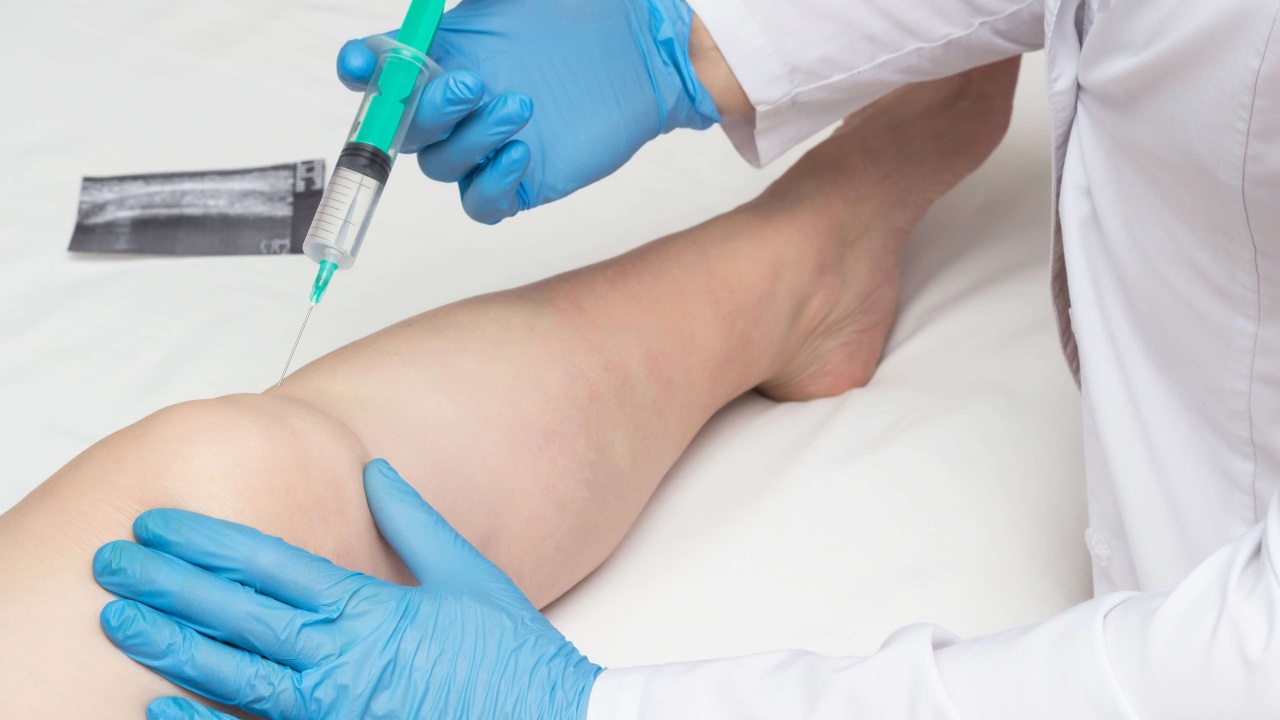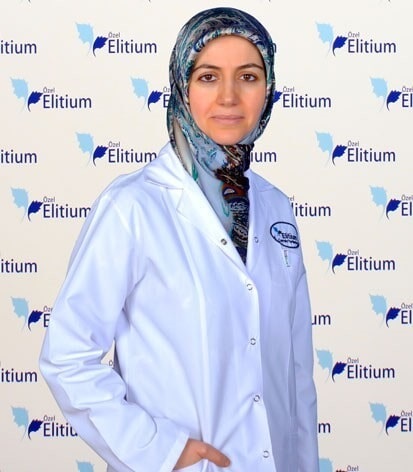WITH GROUND-BREAKING PROLOTHERAPY IN PAIN TREATMENT, YOU CAN GET RELIEF FROM JOINT AND MUSCLE PAIN WITHOUT SURGERY.
With Prolotherapy Technique Developed to Restore Weakened, Worn Joints, Cartilage, Ligaments and Tendons, Non-Surgical Treatment of All Kinds of Joints, Cartilage, Tendons and Muscle Pains is Possible.
What is Prolotherapy?
Prolotherapy is an injection technique that stimulates healing. The problem is the injection of various healing stimulating substances into ligaments, tendons and joints.
This treatment was first applied to patients by Hackett et al. in the 1930s and is still widely used in the USA today.

Prolotherapy is the treatment of soft tissue injuries using injections. It targets the treatment of chronic musculoskeletal pain by injection of an irritant, mostly hyperosmolar dextrose solution. Injections cause inflammation in the area, the body increases blood and nutritional support to the area, as a result of which tissue repair occurs. In prolotherapy, the doctor injects a sugar or salt water-based solution at the point where the damaged ligament or tendon connects with the bone. The injection causes inflammation, which increases blood flow, swelling, and pain. The body then starts the repair and healing process. The length of treatment sessions varies depending on the area being treated. For example, treating a damaged elbow requires an injection in only one area, while treating larger areas such as the neck or back requires more injections. Although only a few injections are made in the treatment of the elbow, the number of injections required in a single treatment for the back can reach up to 50. The longer the number of injections, the longer the treatment time. Treatment usually requires 3 to 6 sessions, performed 1 or 3 week apart. Some practitioners leave gaps of 4 to 6 weeks between treatment sessions.
Prolotherapy; It is a treatment method based on injecting proliferative cell and tissue regenerative solutions into weakened, worn, damaged, loosened and weakened tendons, ligaments and joints. Injected proliferative substances cause a controlled inflammation and inflammation in the joints, at the junction of tendons with muscles, and at the attachment of muscles to bone. The body increases the blood and nutritional support to this region, as a result of which the tissues are renewed and regain their former strength.
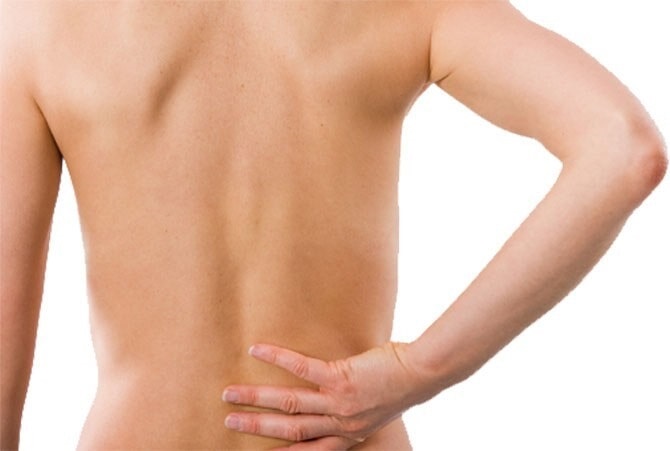
Benefits of Prolotherapy:
Prolotherapy has been used to treat chronic neck and back pain, joint stiffness from arthritis, headaches, fibromyalgia, sports injuries, carpal tunnel syndrome, and partial tears of tendons, ligaments, or cartilage. The main benefit of prolotherapy is that it is a non-surgical procedure that can be performed in a clinic and saves the patient from anesthesia or long post-operative recovery periods. It is also cheaper than surgery. Moreover, in prolotherapy, there is no loss of mobility, as in neck surgery, where the vertebrae are fused to create stability in the spine. Another benefit of prolotherapy is that the patient does not require medication. Patients get rid of the cost and side effects of painkillers.
Preparation for Prolotherapy:
Analgesics and sedatives may be given before treatment to reduce discomfort. However, most patients do not want to use sedatives as it will prevent them from driving after the procedure. Many physicians use topical freezing sprays, ice packs, or anesthetic creams to reduce skin sensitivity. In the hours before the procedure, patients are advised to drink plenty of water as this helps with cell hydration.
Considerations in Prolotherapy:
As with all procedures, prolotherapy has some risks. Patients are asked to sign a consent and consent form. Because the treatment involves needle sticking into the body, there is a possibility of rupture of arteries, nerves, and even lung tissue, depending on the area being treated. Some patients may have an allergic reaction to the injected substance.
Side effects:
The most common side effects include pain during the injection, followed by tenderness and stiffness. Patients are advised not to take anti-inflammatory drugs such as ibuprofen because such drugs interfere with the healing process that prolotherapy aims to achieve.
Research and General Admission:
According to the Alternative Medicine Network, research has shown that prolotherapy cures 92% of those treated, but the therapy has not been sufficiently tested. Opponents of therapy question how prolotherapists decide where to place the needles because weakening of the ligaments will not be visible on the X-ray.
What is Neural Therapy?
Nöral terapi, temelde lokal anestezik ilaçlarla yapılan enjeksiyon yöntemidir. Enjeksiyonların yapıldığı yerlerden dolayı vücudun otonom sinir sistemine etki ederek iyileştirici mekanizmaların çalışmasını başlatır. Bozulmuş olan sinir sistemini tekrar eski dengesine kavuşturmayı amaçlar. Almanya başta olmak üzere birçok ülkede uygulanmaktadır.
Nöral terapi veya nöral tedavi tanımlaması iyileşme için sinir sistemine etki edilmesi anlamında kullanılmaktadır. Nöralterapi, otonom sinir sistemi üzerinde düzenleyici ve uyarıcı etki yaparak iyileşmeyi sağlamaktadır. Hastalıklarımızın ve geçmeyen ağrılarımızın temelinde otonom sinir sisteminde biriken hasarlar yer almaktadır. Bu duruma yaşamımız boyunca geçirdiğimiz mikrobik hastalıklar, ameliyatlar, kazalar, fiziksel ve psikolojik travmalar neden olmaktadır. Bademciklerimiz iltihaplandığında, dişimiz çürüdüğünde ve diş tedavisi olduğumuzda veya sezeryan ameliyatı sonrası o bölgedeki iletişim ağı etkilenir. Yaşam boyu kalıcı olabilen hasarlar bırakır. Bu hasarlar sonradan gelişen hastalıklarımızın temelini oluşturmaktadır. Hasarlı bölge cildine yapılan nöral terapi ile iletişimdeki bozukluk düzeltilmektedir. Nöral terapide lokal anestezik maddenin anestezik etkisi kullanılmaz.
To whom can it be applied?
Neural therapy, which can be used as an effective treatment for organ dysfunctions and hormonal disorders, mainly for pain treatment; Neural therapy can be applied to patients of all ages, including children and the elderly. Blood pressure, sugar, heart etc. Diseases and drugs used by the patient do not prevent treatment. Since the body is completely suppressed in patients using only cortisone, the effectiveness of the treatment decreases. In some applications, caution should be exercised in those who use the blood thinner coumadin. In general, there is no harm in the applications applied to the skin. Neural therapy is not applied to patients with Myasthenia Graves.
How is it applied?
Neural therapy is an injection therapy. In addition to needles applied to the skin, it is applied to organs, all wounds and surgical scars in the body. Intra-articular applications may be required in joint disorders. Thin, small insulin needle tips are generally used in applications.
What is the Neural Therapy Recovery Process? How long is the treatment period?
Neural therapy is a treatment approach aimed directly at the source of the disease. This approach is much more effective and accurate than conventional treatments. Neural therapy provides a successful treatment for all pain, especially migraine. Neural Therapy can be applied in varying forms and durations depending on the patient's underlying disruptive areas and relationship with the disease. In some diseases, the causing interference field is single and typical. Treatment is done in sessions. Standard 2-3 sessions per week can be applied. However, it can also be done intermittently. Treatments are available, sometimes spanning even months. Although the duration of treatment varies according to the patient, it usually does not exceed 10 sessions.
Are There Any Side Effects of Neural Therapy?
Neural Therapy, which is considered a natural treatment, is not a drug treatment. The stimulation of the short-acting local anesthetic in the needles on the autonomic nervous system is used. As soon as the needle is inserted into the skin, this stimulus spreads through the neural network and all previous nerve damage is bioelectrically corrected.
Neural therapy, which has been applied in the West for more than eighty years, has almost no side effects. If the patient has a known allergy to the drugs used, the procedure should not be performed.
In which diseases is it applied?
Pain treatment (Fibromyalgia, Soft tissue rheumatism)
Migraine
Neck, back and waist pain
Shoulder pain
Headache
neuralgia, facial paralysis
sports injuries
Psoriasis
Arrival
Nerve compressions

PRP-Stem Cell Therapy:
PRP (Platelet Rich plasma) or PRP (Platelet Rich Plasma) is one of the natural treatment methods. It is a natural and biological method used for the non-surgical treatment of joint, muscle and tendon problems. Apart from this, it has started to be used in many areas from skin regeneration and hair loss to fracture healing. Platelets, which are blood cells, enable blood to clot. It is the growth and healing factors found in the platelets that provide this. These factors can also promote the healing of damaged tissue.
Growth factors found in platelets:
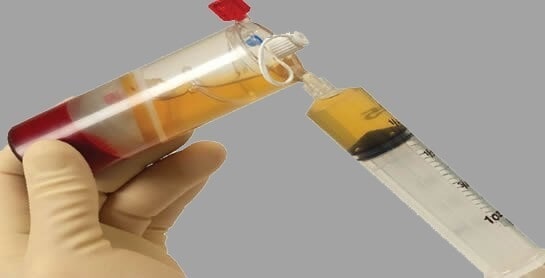
- Platelet Induced Growth Factor (PDGF)
- Insulin-like Growth Factor (IGF)
- Transforming Growth Factor beta (TGF-β)
- Fibroblast Growth Factor (aFGF, bFGF)
- Epidermal Growth Factor (EGF)
PRP (PRP) has a high rate and very high number of platelets, along with a very high rate of growth and improvement factors. When these growth factors are injected into the joint where the damaged ligament, tendon, muscle, soft tissue or damaged cartilage-meniscus are located, a natural and rapid healing and repair starts.
PRP (PRP) is not only a pain reliever but also a curative method. The benefit is seen in 4-6 weeks. The healing of the injected tissue is compared with the pre-injection state with musculoskeletal ultrasound imaging. The patient's pain level and benefit from the first injection are questioned. If necessary, it can be done 3 times in total. It should be noted that repairing the damage in the musculoskeletal system alone may not be enough. Features such as strength, flexibility, balance-coordination, speed and endurance should also be rehabilitated with physical and exercise therapy.
The places where PRP (PRP) treatment is applied are situations where there is damage to the ligament (ligament), tendon (muscle tendon), muscle and cartilage in any part of the musculoskeletal system.
- Sports injuries (muscle tears, tendon tears, ankle sprains)
- Joint calcifications - Especially knee calcifications
- Tendon injuries seen outside of athletes (tennis elbow, golfer's elbow, rotator cuff tendinitis- damage on the shoulder, patellar tendinitis and other knee tendinitis, hip tendinitis, ankle tendinitis such as Achilles)
- Ligament injuries in the ankle that can be seen outside of athletes
- Heel spurs (in those resistant to other treatments)
PRP (PRP) can be prepared and applied in the clinic or practice. Blood is taken from the patient as in the blood test. The blood is taken into a special tube for PRP (PRP). Centrifuge at 3200 rpm for about 15 minutes. After this procedure, the blood will be divided into 3 parts. The plasma separated into the upper part of the tube and the platelet-rich part just below is taken in the required amount and injected, often accompanied by musculoskeletal ultrasound imaging, which is necessary to make sure the needle is in the right place.
For 48 hours after the injection, the joint-tendon should not be forced. With the effect of the strong factors carried by the platelets, a strong cell movement begins in the area and pain may be felt for 1-3 days sometimes after the injection. As with many injections, the injection site may be anesthetized beforehand. This prevents the pain immediately after the injection. It is helpful to use paracetamol tablets for the pain that continues in the days after the injection and to apply ice frequently if necessary.
Trigger Point Injection
Trigger Point InjectionTrigger point is a disorder characterized by the deterioration of the microstructure of the muscle tissue and its transformation into a harder tissue, fibrotic tissue.
In its formation, a minor muscle injury plays an important role. This may be a sudden injury, or it may be due to slowly developing strains. The best example of slowly developing trauma is stress-induced muscle strain. The constant tense and tightness of the muscle causes the trigger point to occur. Apart from stress and mechanical strains, trigger points may also develop due to nerve root damage. The most well-known example of this is the trigger points in the neck and back muscles as a result of the neck hernia pressing on the nerve root.
Damage to the nerve root by the hernia causes a continuous stimulation of the nerve-related neck and back muscles, which often results in the formation of a treatment-resistant trigger point. The most important feature of trigger points caused by neck hernia is that they are resistant to treatment.
What are the characteristics of a classic trigger point?
The trigger point is palpable as a hard nodule in the muscle. There is severe pain when pressing on it. Trigger points in the neck and back region generally restrict the movement of the neck spine. By tapping the trigger point over the skin with a finger, a muscle twitch, which we call the twitch response, occurs. This twitch response is visible to the naked eye. It is not seen in every patient, but when it is seen it is considered as definitive evidence of a trigger point.
Where are trigger points located?
The most common places are the neck and back muscles. Apart from this, it can be seen in the shoulder, elbow, waist, hip and knee regions.
Common side effects of prolotherapy are increased pain at the injection site (which is actually what we expect and want), bruising, swelling, stiffness, flu-like symptoms. These side effects are not harmful to the patient and will go away on their own over time.
Prolotherapy application does not contain Cortisone.
The main diseases in which prolotherapy is applied;
- Joint laxity and loss of strength (laxity)
- Tendinitis and ligamentitis (chronic pains in tendons and ligaments that do not heal)
- Arthrosis (joint calcifications, wear and tear)
- Low back pain (hernia, calcification, post-operative)
- Neck pain (hernia, calcification, post-operative)
- Back pain (hernia, osteoarthritis, post-operative)
- Muscle and ligament pains that do not go away in the spine, rib cage and ribs
- Heel spur and plantar fasciitis
- Pain that does not go away after ankle and wrist sprains
- Coccygodynia (Coccyx pain)
- Scoliosis (contrary to what is known in scoliosis, ligament imbalance is a very important cause)
- Osteitis pubis
- Knee pain (chondromalacia, osteoarthritis, meniscus, ligament damage)
- Tennis and golfer's elbow (epicondylitis)
- Spondylolisthesis (waist shift)
- spinal stenosis
- Avascular necroses (necrosis of bone tissue due to insufficient blood supply)
- Frozen shoulder.
- Impingement syndrome
trigger point therapy
There are many methods of trigger point treatment. The best known are:
1- Trigger point injection
2- Dry needling at the trigger point
3- Acupuncture
4- Spray stretching technique
5- Massage
6- Applying pressure
7- Drug treatments
8- Physical therapy methods
Trigger point injection is based on injecting local anesthetic into the trigger point. This treatment is usually very successful and provides a speedy recovery. In dry needling and acupuncture, a needle is inserted into the trigger point without using drugs. Spray stretching technique is based on applying a cooling spray over the skin to the trigger point area and then stretching the muscle where the trigger point is located. Massage and pressure application techniques can also be successful when applied correctly.
Kinesiotape (Kinesiology Taping)
In recent years, kinesioband, which has been widely used especially in sports, has taken its place as a supportive treatment in muscle and connective tissue disorders. These bands, which were first developed in Japan in 1980, are a treatment option used for very common health problems such as low back, neck and back pain, as well as other problems in the musculoskeletal system.
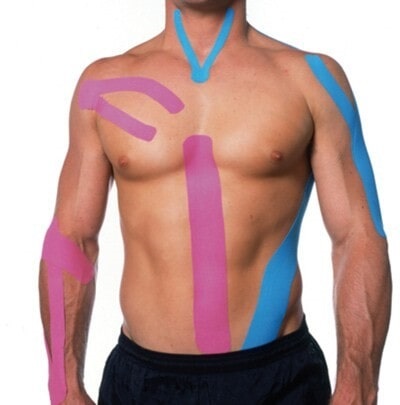
It has been shown in some studies to increase performance and accelerate recovery in athletes. It helps to regulate the tension of the muscle and connective tissue in the area where it is applied, regulates the flow of lymphatic vessels and lymphatic drainage, thus reduces pain and supports the restoration of muscle strength. Especially after ligament, meniscus and tendon injuries in the shoulder and knee, it makes a significant contribution to recovery when used together with physical therapy. It does not contain any drugs, and no significant side effects have been reported, except that it rarely causes allergies. Since the taping technique is important, it is recommended to be applied by certified physicians.
Joint Injections
We perform almost all of the injections with a special x-ray device, which we call ultrasound and scopy, accompanied by imaging. This way we ensure the needle is in the right spot. Studies show that injections with ultrasound and fluoroscopy are more successful.
Purpose of joint, muscle, tendon, nerve and other injections:
- a) in some cases as a sole treatment tool
- b) shortening the total treatment time
- c) rapid relief of pain and early initiation of exercise
- d) rapid relief of edema and inflammation and early initiation of exercise
Injections we do
a) Intra-articular (shoulder, acromioclavicular, sternoclavicular, elbow, wrist, hand knuckles, sacroiliac, hip, knee, ankle, toe joints)
b) Spine (epidural, transforaminal, facet median branch block, sacrococcygeal)
c) Trigger point and paravertebral and other soft tissue (eg piriformis, thoracolumbar junction, trigger finger)
d) Nerve (suprascapular, axillary, musculocutaneous, posterior and anterior interosseous, median, ulnar, lateral femoral cutaneous, sciatic, tibial)
d) Botox
f) Intra-articular, ganglion and other joint cysts, bursa fluid aspiration
Dry Needling - IMS Treatment
Dry needle therapy - What is IMS treatment?
IMS treatment, or dry needling treatment, as it is generally known, is a treatment method based on the stimulation of muscles and soft tissues only with a needle, without any medication. The needles used are extremely thin and pain is not felt during the procedure. It is technically similar to acupuncture. However, in dry needling, the injection sites are not acupuncture points, but painful, sensitive or trigger points. It is one of the best options especially in the treatment of trigger point and fibromyalgia disease.
How does dry needling treatment work?
The most important feature of trigger point disease or myofascial pain syndrome is stiffness in muscle tissue. The reason for these stiffness is the damage of the thin fibers of the affected muscle due to the strain of the tissue, excessive stress, mild but long-term tension as in desk workers, nerve pressure due to neck and lumbar hernias, and then the formation of a calcium-rich tissue in the muscle. Many methods are used to restore this abnormal tissue formed in the muscle. One of the most effective methods in this regard is dry needle treatment. When a needle is inserted into the hardened trigger point, first of all, there is a slight increase in blood supply, the increase in blood supply causes the cleaning of the calcium-rich tissue in the region and the increase in oxygenation, thus initiating the healing.
Kuru iğne tedavisi kaç seans gerekir, tek başına yeterli midir?
Although dry needle treatment varies according to the diagnosis and the patient's condition, it is applied between 3 sessions and 20 sessions. 5-10 sessions in trigger point disease, 15-20 sessions in fibromyalgia, 10-15 sessions in waist and neck arthritis, 1-3 sessions in sudden muscle stiffness are sufficient. Sessions are arranged every day or 2-3 days a week, depending on the patient's condition. In many musculoskeletal diseases, dry needling treatment is not a stand-alone method. It can usually be combined with exercise, physical therapy, or electrotherapy. While dry needling and exercise are sufficient in most patients in trigger point treatment, it is applied together with physical therapy and electrotherapy in low back and neck osteoarthritis and hernias.
What is the success rate of dry needling treatment?
The success rate of dry needle treatment in trigger point disease is very high. In low back and neck hernias, if there is nerve pressure, the effect of dry needle treatment is limited. Success rates in low back and neck pain without nerve pressure and fibromyalgia are moderate. In summary, dry needle therapy is a method most commonly used in the treatment of trigger point disease. It is most successful in the treatment of this disease. Other than that, its effect in the treatment of many painful diseases is limited. It should be considered as an auxiliary method.
Dry needling therapy is used in the treatment of which diseases?
- Trigger point disease ( myofascial pain syndrome )
- Fibromyalgia
- Pain due to low back and neck calcifications
- Waist and neck hernias
- Tendinitis, chronic tennis elbow
- Painful shoulder
Neuroprolotherapy
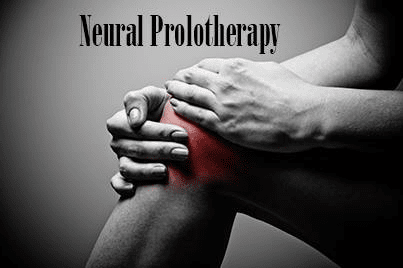
Neuroprolotherapy is the newest step in regenerative medicine used to treat neuropathic pain and other painful conditions caused by damage to the musculoskeletal system. It is also called as neurofacial prolotherapy, subcutaneous prolotherapy or lyfgot technique.
Neural prolotherapy is the subcutaneous injection of medical sugar or mannitol for the recovery of damaged-inflamed nerves and restoration of tissue function.
The basis of neural prolotherapy is based on Hilton's law. In Hilton's law, the nerves that innervate the joint also innervate the skin and muscles that move the joint.
Irritation of the nerves that receive sensation from the skin over the joint causes pain and dysfunction in the tissues and muscles around the joint.
It is known that in classical prolotherapy, hypertonic dextrose provides improvement in the connective tissue in ligaments and tendons. Neuroprolotherapy has also been shown to reduce swelling in the tissue, relieve pain and improve function.
In tissue injuries, proinflammatory substances (bradykinin, prostaglandin) are released and they activate the temporary receptor potential V1 (TRPV1) cation channel (capsaicin) on the nerve. When these channels are opened, inflammation (substance P and CGRP) causes leakage in blood vessels (swelling-oedema), causes hypersensitivity and painful sensation. Dextrose or mannitol block capsaicin receptors, prevent cascade and restore normal nerve function.
Neural prolotherapy is effective in the treatment of pain related to joint, muscle, tendon and ligament injuries (whether acute or chronic). Treatment includes neck, waist, knee, shoulder, hip, elbow, wrist, hand, ankle joint. Pain after total knee replacement and failed back surgery is also effective.
Treatment is arranged 2-3 times a week. Session 10 – 15 min. between may be required.
Prolotherapy is a treatment method that has been used successfully and widely in many developed countries of the world for about 50-60 years.
The number of sessions and how they will be done are determined by the condition of the patient and the disease and depends on many factors. The patient's age, weight and duration of the disease, the size and degree of damage, additional problems such as diabetes, hypothyroidism, metabolic syndrome, obesity, smoking and alcohol use prolong the recovery period. While 4-6 sessions are sufficient for most patients, 8-10 sessions may be required for some patients to get results.
Injections are made every 3 weeks. However, your doctor may shorten this period up to 2 weeks or extend it to 6-8 weeks, depending on the course of treatment.
After prolotherapy, rest is recommended for the first 3 days and it is recommended to apply hot water bags to the treated area for 15-20 minutes every 3-4 hours for the first 3 days.
After prolotherapy, anti-inflammatory painkillers (such as apranax, majezik, voltaren, etol, melox, etc.) are never taken, which we call NSAID group. These analgesics, which have an anti-inflammatory effect, eliminate the effect of prolotherapy. If you have a lot of pain, you can take paracetamol group painkillers (parol, minoset etc.) or tramadol (contramal, zaldiar) that will be prescribed to you without anti-inflammatory effect. You can consult your doctor about this.
